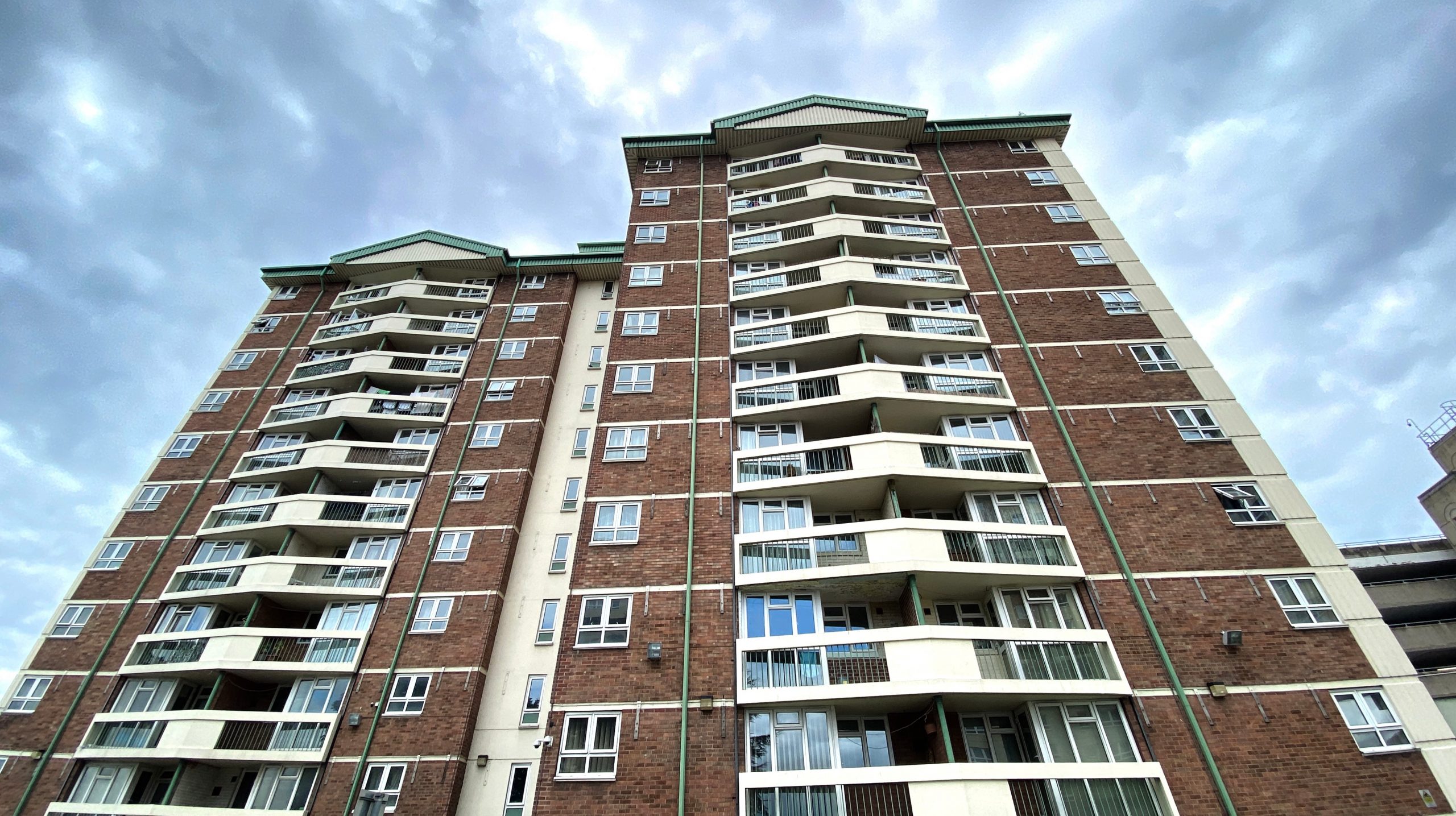Home | Knowledge Hub | News & Insights |
Transforming Building Safety: The Introduction of High-Rise Residential Building Registration
The Building Safety Act 2022 received royal assent in April 2022, marking the biggest overhaul in Building Safety regulations in over 40 years. With a swathe of new regulations offering radical change, the act provides the Built Environment sector with crucial, major reform.
Despite receiving royal assent last year, the initial impact of the Building Safety Act was limited in scope with only a limited number of provisions coming into effect at the time, with secondary legislation being phased in over a period of 12-18 months to support the BSA overarching framework.
Introduction of High-Rise Residential Building Registration
From April 2023, the Building Safety Regulator (BSR) opened the registration process for High Rise Residential Buildings. High rise residential buildings which are occupied must now be registered before September 30th, 2023.
Across England there are approximately 12,500 high-rise buildings, all of which must be registered. These buildings are classified as ‘Higher Risk’. Section 65 of the Building Safety Act defines a Higher Risk Building (HRB’s) are buildings which are:
-
- 18 meters or higher, or have seven or more storeys and
- contains at least 2 or more residential units.
The register aims to establish accountability and compliance amongst those responsible for HRRBs for the safety of their buildings and residents, under the direction of the Building Safety Act 2022.
Accountable Persons and Principal Accountable Persons (PAP’s)
One of the crucial findings stemming from Dame Judith Hackett’s report following the inquiry into the Grenfell tragedy was the lack of clarity surrounding roles and responsibilities, whilst accountability for the safety of a building throughout its lifecycle was also unclear.
In response to this, Part 4 of the Building Safety Act outlines a comprehensive framework to enhance accountability for higher-risk buildings, The framework incorporates the inclusion of new duty holders, namely the Accountable Person and the Principal Accountable Person. Both the Accountable Person (AP) and the Principal Accountable Person (PAP) manage the fire and structural safety risks of a higher-risk building.
Accountable Person (AP)
As outlined by Section 72(1) of the Building Safety Act 2022, an ‘Accountable Person’ is:
-
- A person who holds a legal estate in possession in any part of the common parts; or
- A person who does not hold a legal estate in any part of the building but who is under a relevant repairing obligation in relation to any part of the common parts
Principal Accountable Person (PAP)
Each Higher-Risk Building could possibly have more than ONE accountable person. The presence of multiple accountable individuals necessitates the crucial role of the Principal Accountable Person (PAP). It is mandated that each HRB must have ONE clearly identifiable accountable person, known as the Principal Accountable Person.
The PAP can be an individual OR an organisation, such as:
-
- Commonhold Association
- Local Authority
- Social Housing Provider
Appointing a Principal Accountable Person
In instances where a Higher-Risk Building (HRB) has a single accountable person, that individual is automatically designated as the Principal Accountable Person, therefore assuming the primary responsibility.
In cases where a Higher-Risk Building has more than one accountable person, the role of Principal Accountable person, is assumed by whoever owns or has a legal obligation to repair the structure and exterior of the building.
Who’s responsible for High-Rise Residential Building Registration?
The responsibility of registering HRRBs resides with the Principal Accountable Person. The registration process must be completed in its entirety by either the Principal Accountable Person, or by an individual who has been authorised by the Principal Accountable Person to do so on their behalf. There are 2 key focus points that either the Principal Accountable Person or the authorised individual must do during the registration process:
-
- Submit structure and safety information about the building
- Notify the Building Safety Regulator of any changes to the information submitted at registration
Submission of structure and safety information about the HRB:
As part of the registration process, the PAP is obligated to submit a comprehensive ‘Building Summary’. The Building Summary necessitates the inclusion of crucial information that encompasses the characteristics and specification of the HRB.
The Building Summary must encompass the following information:
1. The number of floors at/or above ground level
You are required to count all levels from ground level, through to the top floor, whether they have residential units or not. It is important to note, you should exclude anything below ground level, and also the roof of the building.
2. Height of the HRB
The height of the HRB, should be measured in metres (up to 2 decimals places) from the ground level to the top floor. Do not include the roof.
You can estimate the height if the building:
-
- has at least 7 floors
- is clearly over 18 metres
It is important to note, should you choose to estimate the height, it is important to keep a record of how you estimated the height of the HRB.
3. Number of residential units
Count all residential units, irrespective of whether someone is living in them or not. A residential unit is classed as place where someone can live, such as a flat, apartment, maisonette or a room in student accommodation.
4. Details of when the building was completed/originally built.
For buildings completed in 2023 or later, you must include the name of the building control body that issued the completion certificate or final notice, and the certificate or notice number. However, for buildings completed before 1985, you do not need to include this information in the building summary.
5. Structure and Fire Safety Information:
You must include Structure and Fire Safety Information. This is otherwise known as ‘Key Building Information’ as per Section 89 of the Building Safety Act. ‘Key Building Information’ plays a pivotal role in facilitating the Building Safety Regulators ability to comprehensively analyse and comprehend trends and risks associated with HRB. This allow the BSR to effectively prioritise their assessment of existing higher-risk buildings through the building assessment certificate process.
Key Building Information includes (this list is not exhaustive):
-
- Fire and smoke controls
- Energy supplies, storage and generation
- Type of structure, roof, staircases and external walls
- The building’s use
- Building work since original build
- Connections between structures or to other buildings
Notify the Building Safety Regulator of any changes to the information submitted at registration:
The Building Safety Regulator must be notified of any changes in information submitted in your registration application, following the completion of the registration. The PAP is required to complete this notification within 14 days of being made aware of any changes.
The Importance of High-Rise Residential Building Registration:
The implementation and introduction of a High-Rise Residential Building Registration System carries substantial significance in upholding the principles of safety, accountability and efficient management pertaining to HRRBs.
The Grenfell tower tragedy had a profound impact on the building safety regime within the United Kingdom. Following the tragedy, the regulatory framework governing high-rise and complex structures underwent rigorous scrutiny, unveiling grave shortcomings.
With a lack of accountability and responsibility identified amongst the many shortcomings in Dame Judith Hackett’s report, the introduction of high-rise residential building registration enhances accountability and responsibility across HRRBs. With the introduction of new duty-holders, as mandated by the regulatory framework imposed by the Building Safety Act, there are now clear lines of responsibility.
Legal Responsibilities and Repercussions:
The significance of complying with high-rise residential building registration lies in upholding your legal obligations, as set out by the regulatory framework surrounding the Building Safety Act 2022.
An additional recommendation as part of Dame Judith Hackitt’s seminal report, was the need for tougher penalties and sanctions. The report underscored the importance of implementing more rigorous penalties and sanctions as a means of deterring non-compliance.
In line with these recommendations, the Building Safety Act 2022 imposes tougher measures on those found to be contravening a relevant legal requirement without any reasonable excuse.
As a result, should the Principal Accountable Person (PAP) fail to register their Higher-Risk Building by September 30th, they will be failing to meet their legal requirements, resulting in non-compliance and could be subject to the tougher penalties and sanctions, outlined in the Building Safety Act 2022.
High-Rise Residential Building Registration and its role in transforming unsafe building safety practices:
The High-Rise Residential Building Register will serve as a fundamental catalyst in fostering an unparalleled safety culture across HRRBs. Through the implementation of the mandatory registration system tailored to Higher-Risk Buildings, it offers regulatory authorities a comprehensive database of the estimated 12,500 Higher-Risk Buildings across England.
Consequently, this allows the sector to adopt both a proactive and preventive approach to the building safety regime for HRRBs. By having a database which encompasses crucial details for each HRRB, regulatory authorities are now bestowed with a wealth of requisite information, enabling them to effectively oversee and ensure the compliance of each HRRB with safety standards and that all legal obligations are being met.
Ensuring Resident Safety; Post Grenfell:
Ultimately, the overarching importance, lies within ensuring the safety of those who reside in High-Rise Residential Buildings. As a result of the devastating Grenfell Tower Tragedy, 72 innocent lives were sadly lost, leaving behind a profound, lasting impact on their loved ones, the communities in which they felt at home in and on society as a collective.
Undoubtedly, the paramount objective for everyone across the Built Environment Sector must be to ensure that such a tragedy is prevented from reoccurring. The introduction of high-rise residential building registration brings about a heightened level of accountability and responsibility, thereby playing a pivotal role in the transformation of the building safety regime. These crucial elements collectively contribute to the most important goal; safeguarding the well-being of residents in high-rise residential buildings (HRRBs).
How do you ensure you are compliant:
The Building Safety Act has ushered in a momentous, positive paradigm shift within the built environment sector, heralding an era of profound transformation and signifying the most substantial regulatory change witnessed in over 40 years.
We understand the importance of compliance, not just for legal reasons, but because of the impact it can have on building safety and ultimately, on the lives of those who reside in higher-risk buildings. Moreover, our fundamental objective sees us leverage our expertise and industry knowledge to promote and facilitate positive change across the built environment sector.
The OM Group are on hand to help guide and support you. We ensure we remain at the forefront of legislative reform, which allows us to exemplify our commitment in fostering accessible, comprehensive legislative support and guidance to those across the built environment sector.
Contact The OM Group today and find out how we can assist you in meeting your legislative requirements in relation to the new regulatory framework introduced by the Building Safety Act 2022.
Speak to one of our Experts

Connect on LinkedIn
Damini Sharma
Recently, being recognised as one of the Top 100 Influential Women in Construction, Damini is a passionate advocate for elevating building safety standards across the built environment sector. With vast experience across the sector, spanning over two decades, Damini is both a progressive change-maker and seasoned professional. Contact us today.
Damini Sharma
Recently, being recognised as one of the Top 100 Influential Women in Construction, Damini is a passionate advocate for elevating building safety standards across the built environment sector. With vast experience across the sector, spanning over two decades, Damini is both a progressive change-maker and seasoned professional. Contact us today.
Other Insights
Share
Get in touch
hello@theomgroup.co.uk
0344 288 9000
Any questions?
We’re here to help. Ask us a question and one of our experts will provide you with a detailed reply.


